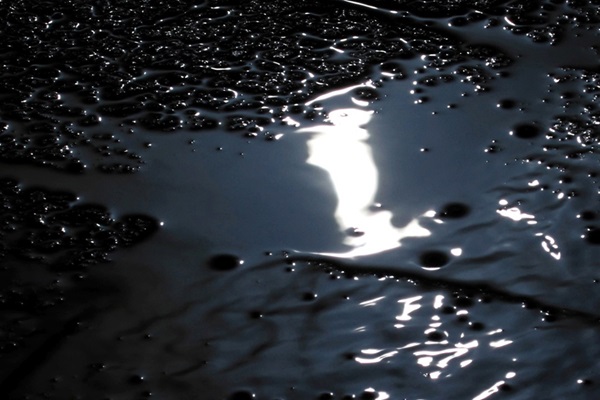I almost made it to the remote Norwegian island of Svalbard on March 19, 2015, to view the next day’s total eclipse of the Sun. But a tight connection, last flight, and other logistical nightmares ended my travels that day. So, I settled into a hotel in Oslo, where I awoke on eclipse morning to a gray sky and lots of drizzle.
A ripple effect
The puddle acted like a mirror, reflecting the image to my eyes. The dark asphalt background combined with the thinning cloud acted as a natural filter (absorbing and scattering light), reducing the Sun’s brilliance by some 50-fold and making the eclipse comfortable to observe without optical aid.
Muddle in a puddle
The puddle view also revealed a beautiful aureole — the innermost ring of the colorful atmospheric corona. It consisted of a pale blue inner region (indicating scattering of blue light by tiny water droplets in the cloud) fringed by a smoky orange ring.
Usually, the aureole is indeed concentric with the Sun’s disk. But during a partial solar eclipse, the ring is concentric with the illuminated crescent, making the colored sphere appear oddly lopsided. You can view this effect more frequently when viewing a lunar crescent through passing altocumulus clouds.
Finally, I got a shudder when I saw what appeared to be a reversed aureole effect. When looking at the eclipsed Sun in the puddle, I saw the greatest extent of the aureole on the side of the eclipsed Sun when it should have been the other way around. It took but a moment for me to realize that this was an illusion created by a crescent-shaped cloud edge, almost concentric with the Sun, which obscured the greater half of the aureole.
The effect recalled a telescopic observation of the Skull Nebula (NGC 246), a planetary nebula in Cetus. It has a central star that appears off-center because the nebula’s eastern rim is exceedingly faint and fully one-quarter of the shell is all but invisible through small telescopes.
As always, go gently into the night (or the shadow-darkened day, if that applies), and let me know what you observe at sjomeara31@gmail.com.













